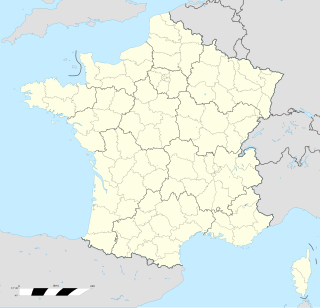 W
WAge of Empires II: The Conquerors is the first expansion pack to the 1999 real-time strategy video game Age of Empires II: The Age of Kings. The fourth installment in the Age of Empires series by Microsoft Game Studios and Ensemble Studios, The Conquerors was released in August 2000. It features five new civilizations, four new campaigns, eleven new units, twenty-six new technologies, new gameplay modes, new maps and different minor tweaks to the gameplay.
 W
WThe Bayeux Tapestry is an embroidered cloth nearly 70 metres (230 ft) long and 50 centimetres (20 in) tall that depicts the events leading up to the Norman conquest of England concerning William, Duke of Normandy, and Harold, Earl of Wessex, later King of England, and culminating in the Battle of Hastings. It is thought to date to the 11th century, within a few years after the battle. It tells the story from the point of view of the conquering Normans but is now agreed to have been made in England.
 W
WThe Conqueror is a novel written by Georgette Heyer. It is based on the life of William the Conqueror.
 W
WEmpire Earth is a real-time strategy video game developed by Stainless Steel Studios and released on November 23, 2001. It is the first game in the Empire Earth series.
 W
WHereward the Wake: Last of the English is an 1866 novel by Charles Kingsley. It tells the story of Hereward, a historical Anglo-Saxon figure who led resistance against the Normans from a base in Ely surrounded by fen land. It was Kingsley's last historical novel, and was instrumental in elevating Hereward into an English folk-hero.
 W
WLady Godiva of Coventry is a 1955 American Technicolor historical drama film, directed by Arthur Lubin. It starred Maureen O'Hara in the title role. Alec Harford, the English actor who portrayed Tom the Tailor, died eight months before the film's release.
 W
W"The Rime of King William" is an Old English poem that tells the death of William the Conqueror. The Rime was a part of the only entry for the year of 1087 in the "Peterborough Chronicle/Laud Manuscript." In this entry there is a thorough history and account of the life of King William. The entry in its entirety is regarded "as containing the best contemporary estimate of William's achievements and character as seen by a reasonably objective Englishman". As a resource, earlier writers drew from this in a more literal sense, while later historians referred to it more liberally. The text in its original language can be found in The Peterborough Chronicle 1070–1154, edited by Cecily Clark. A modern translation can be found in the Anglo-Saxon Chronicles translated by G.N. Garmonsway. Seth Lerer has published a more recent modern translation of "The Rime of King William" in his article, "Old English and Its Afterlife," in The Cambridge History of Medieval English Literature.
 W
WThe statue of William the Conqueror is located in his birthplace, Falaise, Calvados, about 30 kilometres southeast of Caen, France. It depicts William the Conqueror, Duke of Normandy and King of England, on a horse, and is surrounded by statues of his six ducal predecessors. It is the work of the French sculptor Louis Rochet.